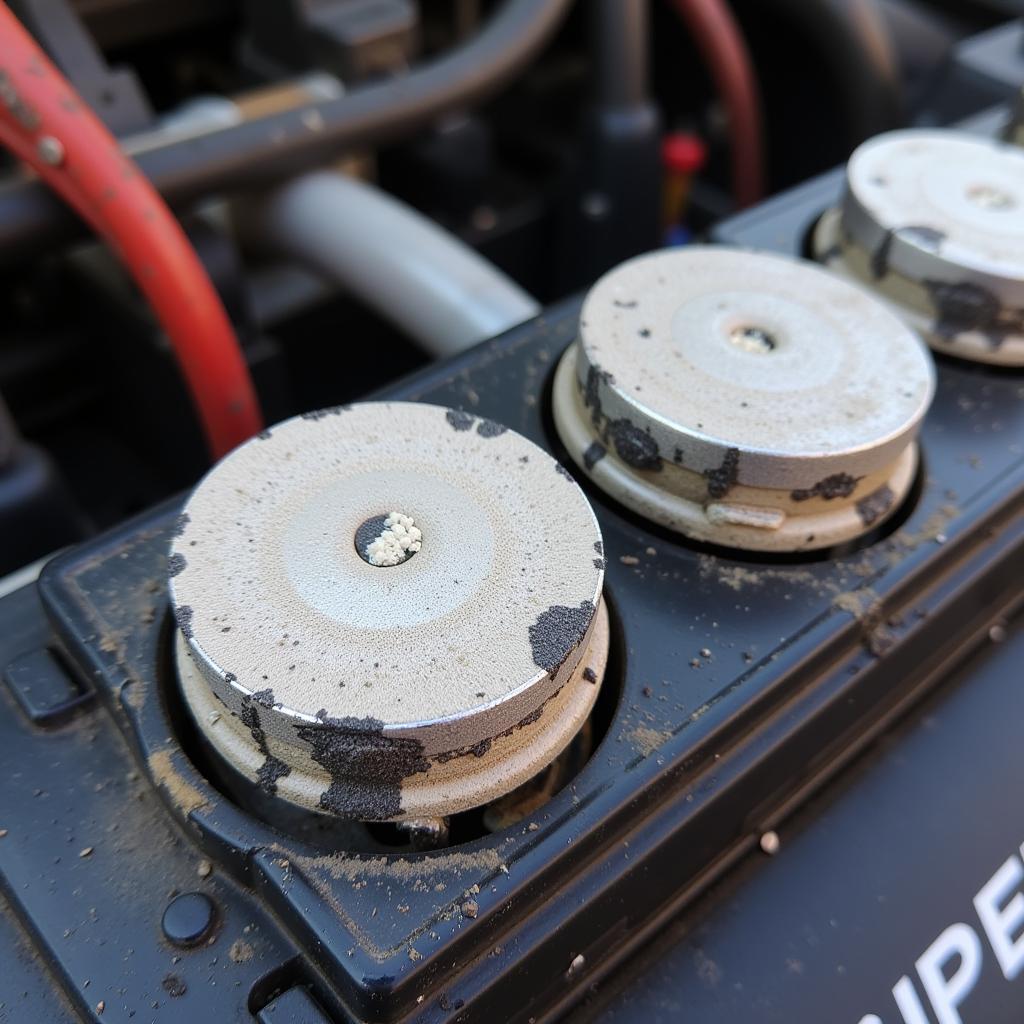If your 2007 Chevy Lumina’s brake warning light is stubbornly refusing to switch off, you’re not alone. This is a common issue that many Lumina owners face, often causing worry and uncertainty. While it can signal a serious problem, it can also be triggered by something as simple as a faulty sensor. This comprehensive guide will walk you through the potential causes and provide clear, actionable steps to help you diagnose and address the problem.
Understanding Your Lumina’s Brake System
Before delving into troubleshooting, it’s crucial to understand the basics of your Lumina’s braking system. It’s designed with several key components that work together to ensure safe and effective braking:
- Hydraulic System: This system utilizes brake fluid to transmit force from the brake pedal to the wheels, slowing or stopping the vehicle.
- Brake Pads and Rotors: When you press the brake pedal, these components create friction, generating the force needed to stop the vehicle.
- Brake Lines and Hoses: These carry brake fluid throughout the system.
- Sensors: Your Lumina uses various sensors to monitor different aspects of the brake system, including brake fluid level, parking brake engagement, and Anti-lock Braking System (ABS) functionality.
Common Causes of a Stuck Brake Warning Light
There are several reasons why your 2007 Chevy Lumina’s brake warning light might stay on. Let’s explore some of the most common culprits:
1. Low Brake Fluid Level
The most frequent cause is a low brake fluid level. This usually indicates a leak in the brake system or worn brake pads.
What to do: Check the brake fluid level in the reservoir. If it’s low, adding brake fluid might temporarily solve the problem. However, it’s crucial to locate and repair the leak to prevent further issues.
2. Worn Brake Pads
Brake pads naturally wear down over time. When they reach a certain thinness, a sensor triggers the brake warning light to alert you about the need for replacement.
What to do: Inspect your brake pads’ thickness. If they appear thin or you notice any scoring on the rotors, it’s time for a replacement.
3. Faulty Brake Light Switch
The brake light switch is responsible for activating your brake lights when you press the pedal. A malfunctioning switch can also trigger the brake warning light.
What to do: If your brake lights aren’t working correctly in conjunction with the warning light, the switch is likely the issue and needs replacement.
4. ABS Issue
A problem with your Lumina’s Anti-lock Braking System (ABS), such as a faulty wheel speed sensor, can also illuminate the brake warning light.
What to do: If you suspect an ABS issue, it’s best to get a diagnostic scan using an OBD-II scanner to pinpoint the exact problem.
5. Electrical Fault
Electrical issues like a blown fuse, a short circuit, or a faulty wiring harness can disrupt signals within the brake system, leading to a false warning light.
What to do: Visually inspect the fuses related to the brake system and check for any loose connections or damaged wiring.
Diagnosing the Problem
If a visual inspection and basic checks haven’t pinpointed the cause, you might need a more in-depth diagnosis. This often involves:
-
Connecting an OBD-II Scanner: This device plugs into your Lumina’s diagnostic port and reads trouble codes stored in the vehicle’s computer, providing valuable insights into the issue.
-
Checking for Error Codes: Specific codes correspond to different components and areas of the brake system, helping you narrow down the potential culprit.
-
Consulting a Mechanic: If you’re uncomfortable performing these diagnostic steps or the problem persists, it’s best to consult a qualified mechanic specializing in Chevrolet vehicles.
Conclusion
A constantly illuminated brake warning light in your 2007 Chevy Lumina should never be ignored. It’s crucial to address the underlying issue promptly to ensure your safety and prevent further damage to your vehicle. By understanding the common causes and following the troubleshooting steps outlined in this guide, you can confidently tackle this common problem. Remember, if you’re unsure about any aspect of the diagnostic or repair process, seeking help from a qualified mechanic is always the safest course of action.

